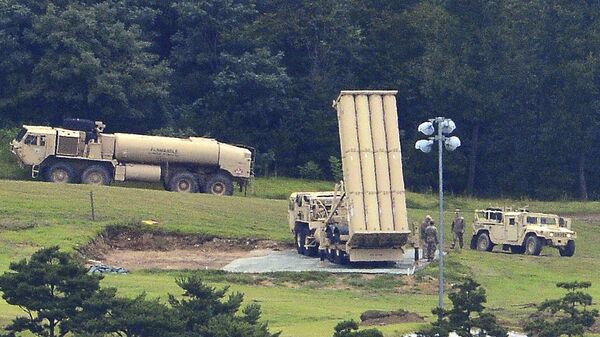"It's no secret to anybody that the DPRK nuclear missile problem is, in fact, being used as a pretext for continuing the militarization of the Asia-Pacific region in the interests of containing Russia and China," Russian Security Council Secretary Nikolai Patrushev said in an interview with the "Argumenty i Fakty" (Arguments and Facts) newspaper.
According to him, Washington "consistently realizes its plans to deploy elements of its global missile defense system in the countries of the region."
Patrushev went on to say that in the event of war on the Korean peninsula, the United States would have to respect the lives of US citizens living in South Korea.
READ MORE: North Korea Advises US to Give Up 'Pipe Dream' of Pyongyang Abandoning Nukes
"As history shows, the US is not accustomed to respecting the lives of citizens of other states to achieve its goals. However, Washington will certainly take into account the fact that there are 250,000 Americans living in South Korea," Patrushev said, adding that in case of large-scale military operations on the Korean peninsula, their lives will be under threat.
"And such losses in the language of the military of all countries of the world are deemed unacceptable. The positions of missile systems with operational and tactical missiles, barrel artillery and missile systems with volley fire by North Korea are at a distance of some 50 kilometers from Seoul," he stated.
Image of Aggressor
The Russian Security Council secretary has explained that Washington was using images of aggressor countries for its economic interests and acts, as it did during the Cold War, commenting on the new US national security strategy, calling Iran and the DPRK rogue states, while referring to Russia and China as "revisionist authoritarian powers" that challenge the US and seek to undermine their security. Among the priorities of US foreign policy, this document notes are "the strengthening of peace through the use of force" and "the spread of American influence."
READ MORE: US Troops in Northern Europe Heighten New Cold War Tensions With Russia
"Behind the images of aggressor countries imposed by Washington are real economic interests and the same expansionist ideas of the Cold War era, which have not changed for decades," Patrushev said.
He recalled that the US military budget for 2018 amounted to almost $700 billion, including $4.6 billion to contain so-called "Russian aggression" in Europe, with $100 million being allocated to strengthen the defense of the Baltic States, and $350 million to be spent on military aid to Ukraine.
READ MORE: 'Cold War Mentality': China Blasts Trump's New National Security Strategy
"In the history of the twentieth century, there are many examples of the dire consequences that such infusions brought from overseas caused," he concluded.




